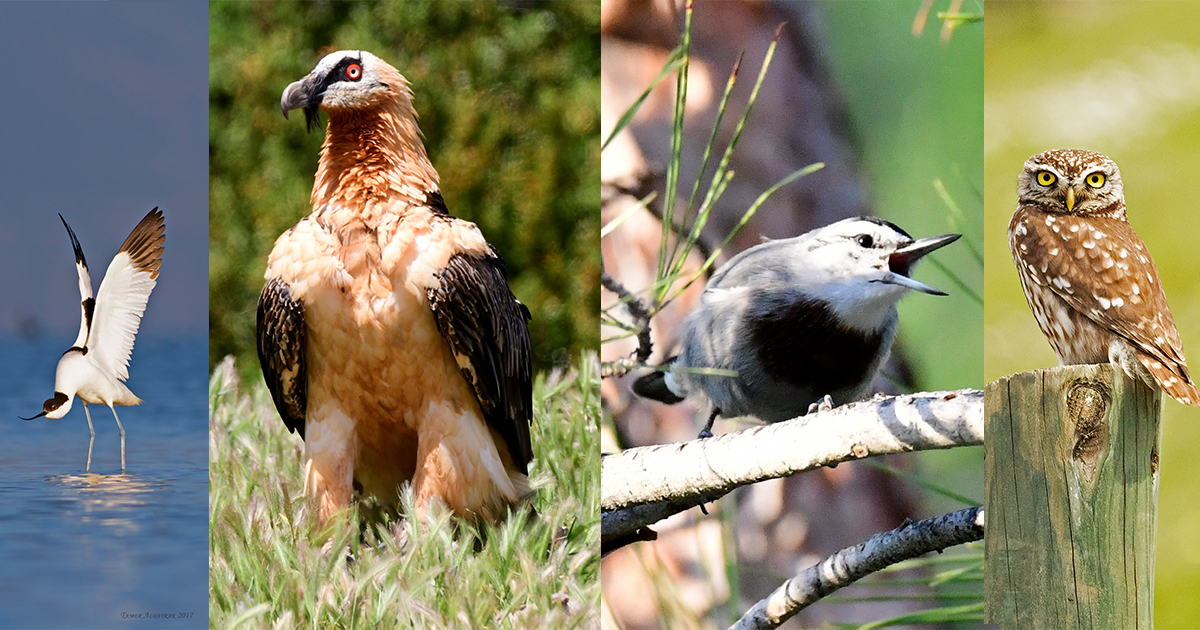Selected Papers from International Eurasian Ornithology Congress (IEOC 2023)
A special issue of Diversity (ISSN 1424-2818). This special issue belongs to the section "Animal Diversity".
Deadline for manuscript submissions: closed (31 March 2024) | Viewed by 2693

Special Issue Editors
Interests: phytochemistry; molecular pharmacology of medicinal and toxic plants; alkaloids; evolution; chemical ecology; ornithology; phylogeny and evolution
Special Issues, Collections and Topics in MDPI journals
Interests: birds; phylogeography; population genetics; host–parasite interactions; evolution; conservation genetics
Special Issues, Collections and Topics in MDPI journals
Special Issue Information
Dear Colleagues,
The VII. International Eurasian Ornithology Congress (IEOC 2023) will be held on 18–21 October 2023 in İzmir, Turkey, and selected papers will be published in this Special Issue. The aim of this conference is to bring together ornithologists and birdwatchers in general to create a platform for knowledge exchange and to discuss academic and applied problems and their solutions. This congress welcomes everybody who cares about nature, particularly ornithology and bird evolution. This Special Issue will cover subject areas including, though not limited to, the following:
- Behavior;
- Bird strikes and aircraft safety;
- Climate change;
- Collision with obstacles;
- Conservation;
- Ecology;
- Evolution;
- Migration;
- Parasitology;
- Phylogeography and phylogeny;
- Wildlife management;
- Other related topics.
We believe that this Special Issue can provide a broad overview of current avian research and we look forward to the contributions from IEOC 2023.
Prof. Dr. Michael Wink
Prof. Dr. Tamer Albayrak
Guest Editors
Manuscript Submission Information
Manuscripts should be submitted online at www.mdpi.com by registering and logging in to this website. Once you are registered, click here to go to the submission form. Manuscripts can be submitted until the deadline. All submissions that pass pre-check are peer-reviewed. Accepted papers will be published continuously in the journal (as soon as accepted) and will be listed together on the special issue website. Research articles, review articles as well as short communications are invited. For planned papers, a title and short abstract (about 100 words) can be sent to the Editorial Office for announcement on this website.
Submitted manuscripts should not have been published previously, nor be under consideration for publication elsewhere (except conference proceedings papers). All manuscripts are thoroughly refereed through a single-blind peer-review process. A guide for authors and other relevant information for submission of manuscripts is available on the Instructions for Authors page. Diversity is an international peer-reviewed open access monthly journal published by MDPI.
Please visit the Instructions for Authors page before submitting a manuscript. The Article Processing Charge (APC) for publication in this open access journal is 2100 CHF (Swiss Francs). Submitted papers should be well formatted and use good English. Authors may use MDPI's English editing service prior to publication or during author revisions.
Keywords
- bird
- ornithology
- aves
Benefits of Publishing in a Special Issue
- Ease of navigation: Grouping papers by topic helps scholars navigate broad scope journals more efficiently.
- Greater discoverability: Special Issues support the reach and impact of scientific research. Articles in Special Issues are more discoverable and cited more frequently.
- Expansion of research network: Special Issues facilitate connections among authors, fostering scientific collaborations.
- External promotion: Articles in Special Issues are often promoted through the journal's social media, increasing their visibility.
- e-Book format: Special Issues with more than 10 articles can be published as dedicated e-books, ensuring wide and rapid dissemination.
Further information on MDPI's Special Issue polices can be found here.






